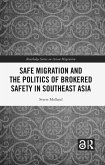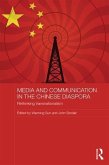New communication technology has transformed the way in which news about key events is communicated. For example, in the immediate aftermath of catastrophic events such as the Mumbai attacks or the Japanese tsunami, partial accounts, accurate and inaccurate facts, rumour and speculation are now very rapidly disseminated across the globe, often ahead of official announcements and formal news reporting. Often in such situations rumours take hold, and continue to characterise events even after a more complete, more accurate picture eventually emerges. This book explores how such rumours are created, disseminated and absorbed in the age of the internet and mobile communications. It includes a wide range of examples and, besides considering the overall processes involved, engages with scholarly debates in the field of media and communication studies.
Hinweis: Dieser Artikel kann nur an eine deutsche Lieferadresse ausgeliefert werden.
Hinweis: Dieser Artikel kann nur an eine deutsche Lieferadresse ausgeliefert werden.








